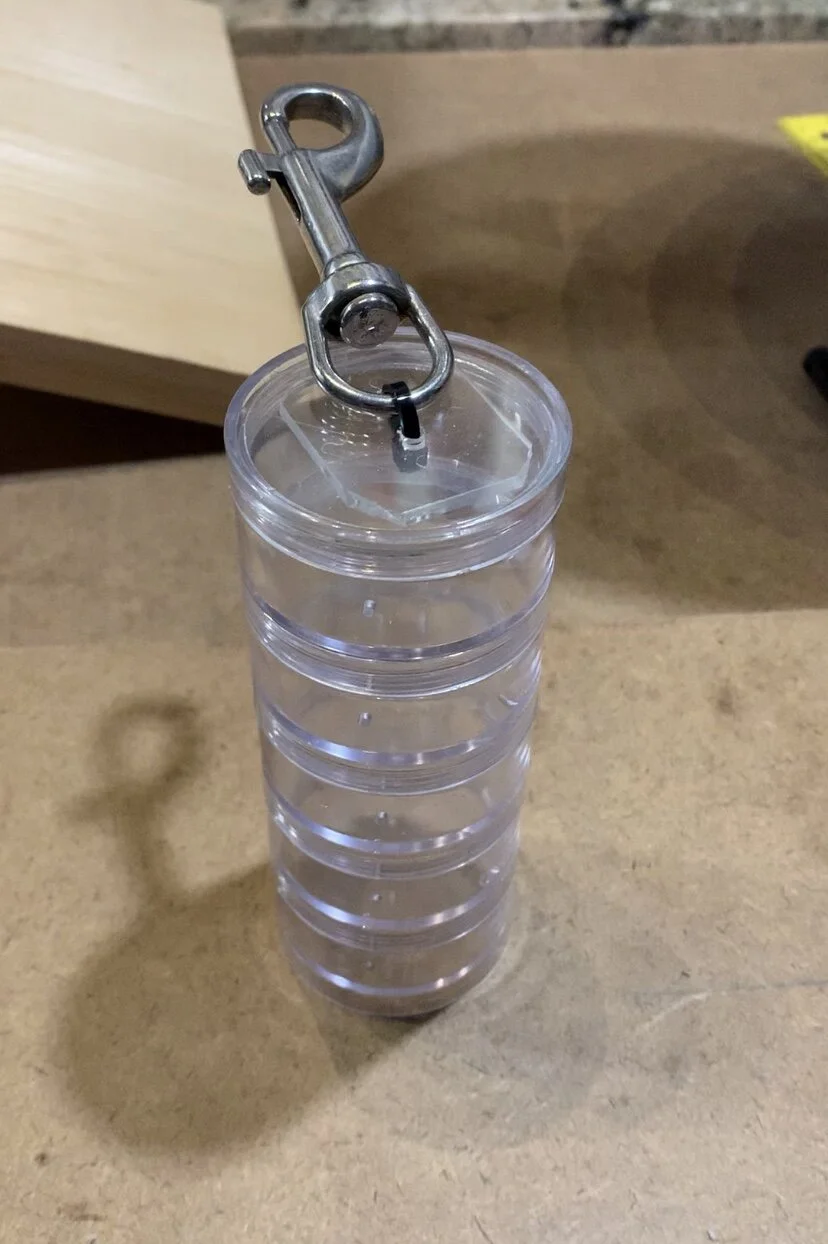Data Collection Device
Tissue sample collection and storage on dry land can be difficult, this process conducted underwater is increasingly difficult and brings some unique challenges for our team to overcome.
Dave and Daniel have been working towards refining our sample collection devices. This has been harder than anticipated due to the challenges depth and pressure play while underwater. The sample devices must have the ability to regulate from surface pressure to pressure at depth. The atmospheric change is 1ATA/10m or 33ft. The devices also must be small and durable, able to fit in the team collector’s dry suit pockets. A dry suit is an exposure suit that keeps the diver warm and dry underwater.
Daniel began his journey of engineering a device. He started by drawing what one might look like. Although he discovered that he didn’t have the artistic skills to create a schematic, he had two basic ideas for a working device: 1) it would feature a valve that could be opened and closed; or 2) it would have a cap that could be removed. Coming up with a device was large enough to house multiple samples, yet small enough to fit in a dry suit pocket was challenging.
Dave came up with the cleaver idea of using a circular container commonly used for fishing components. The container has multiple stacked compartments which can be separated to hold several samples. Dave drilled small holes in each compartment to allow for pressure equalization. Finally, he attached a simple bolt snap to secure it to a dry suit pocket bungee. Given its small size, a dive team could carry multiple devices on a dive.
Below the sample collection devices a can be seen. Stay tuned for their maiden journey out at sea.
Dave’s collection device

